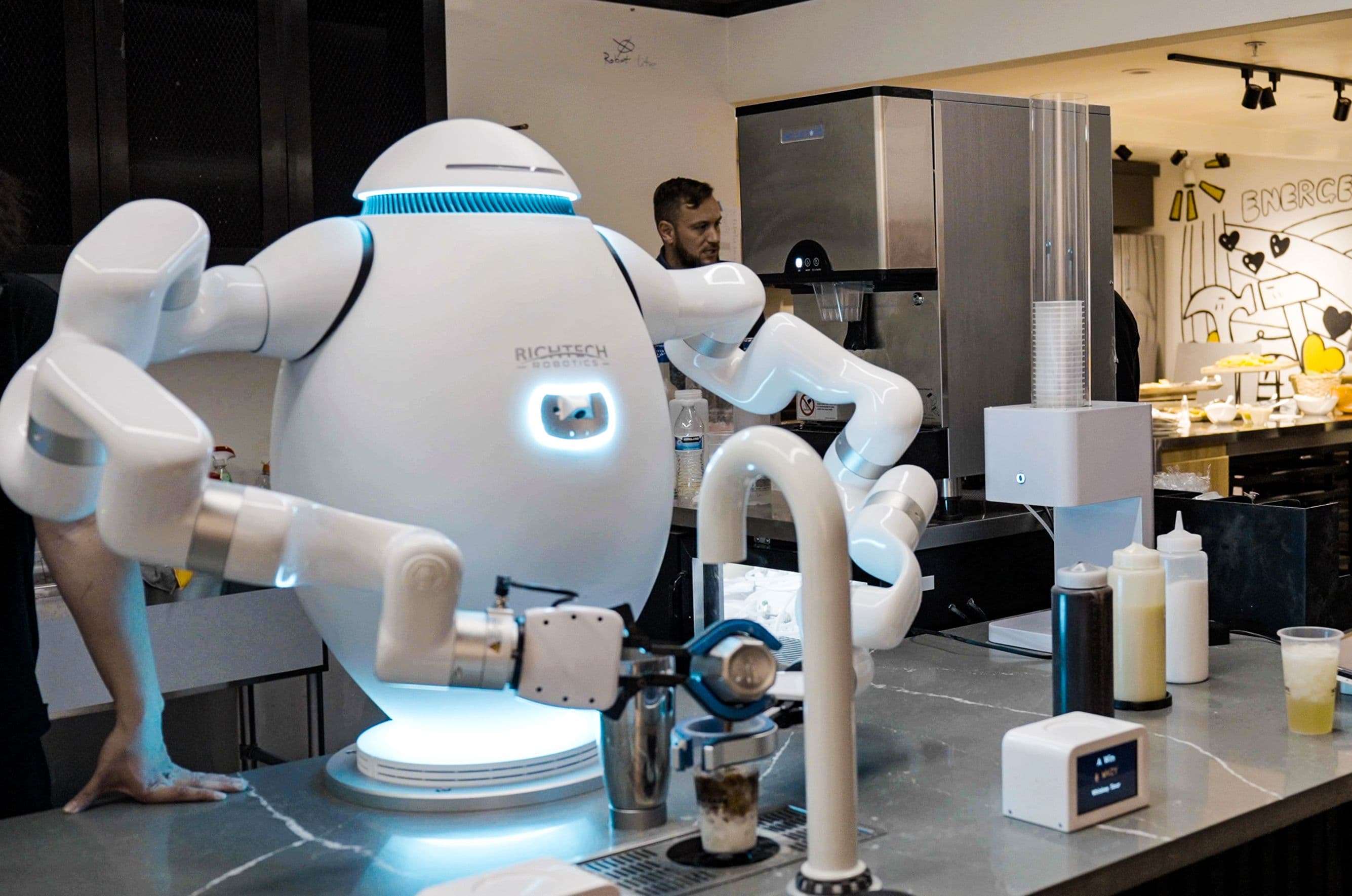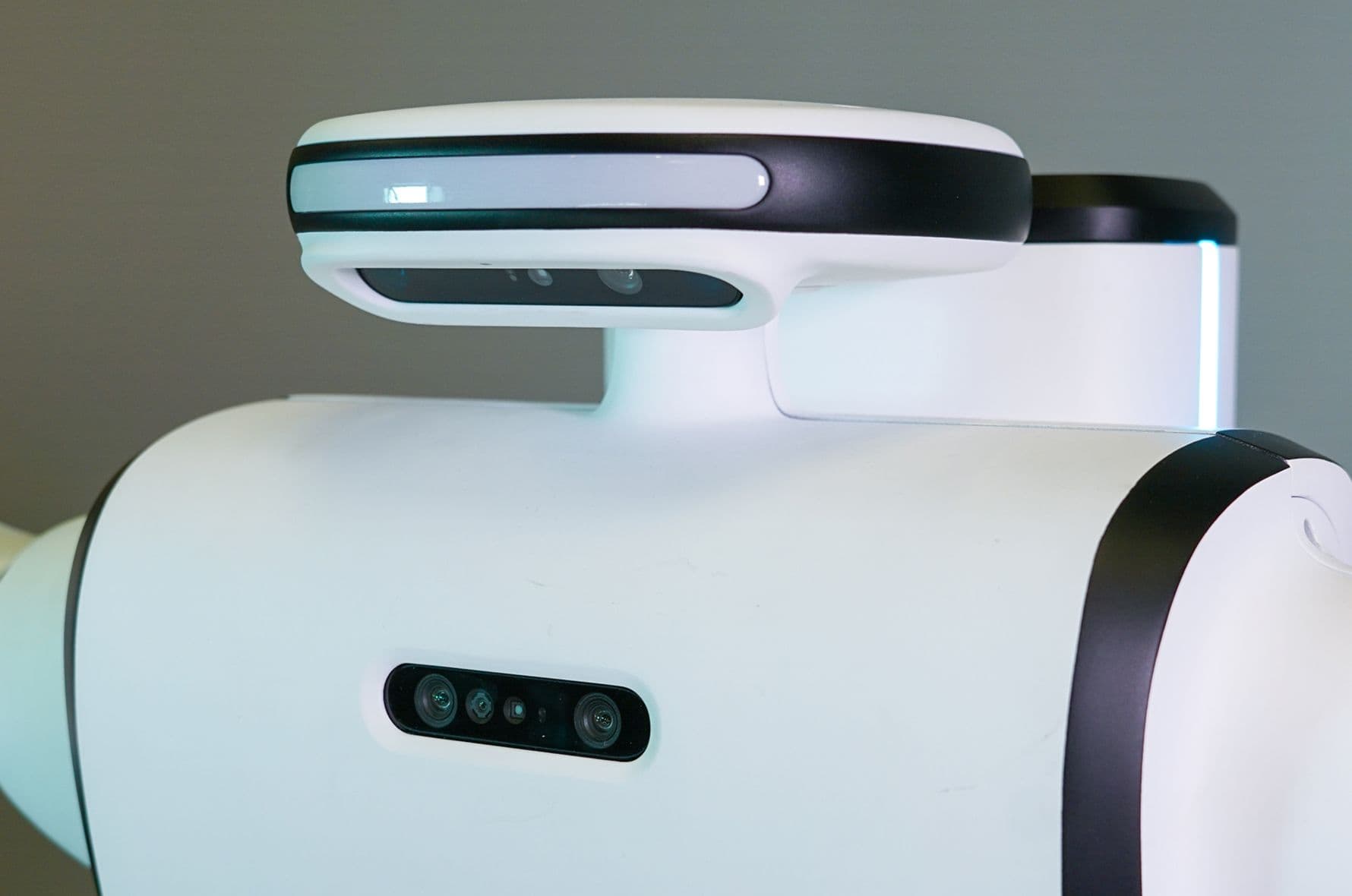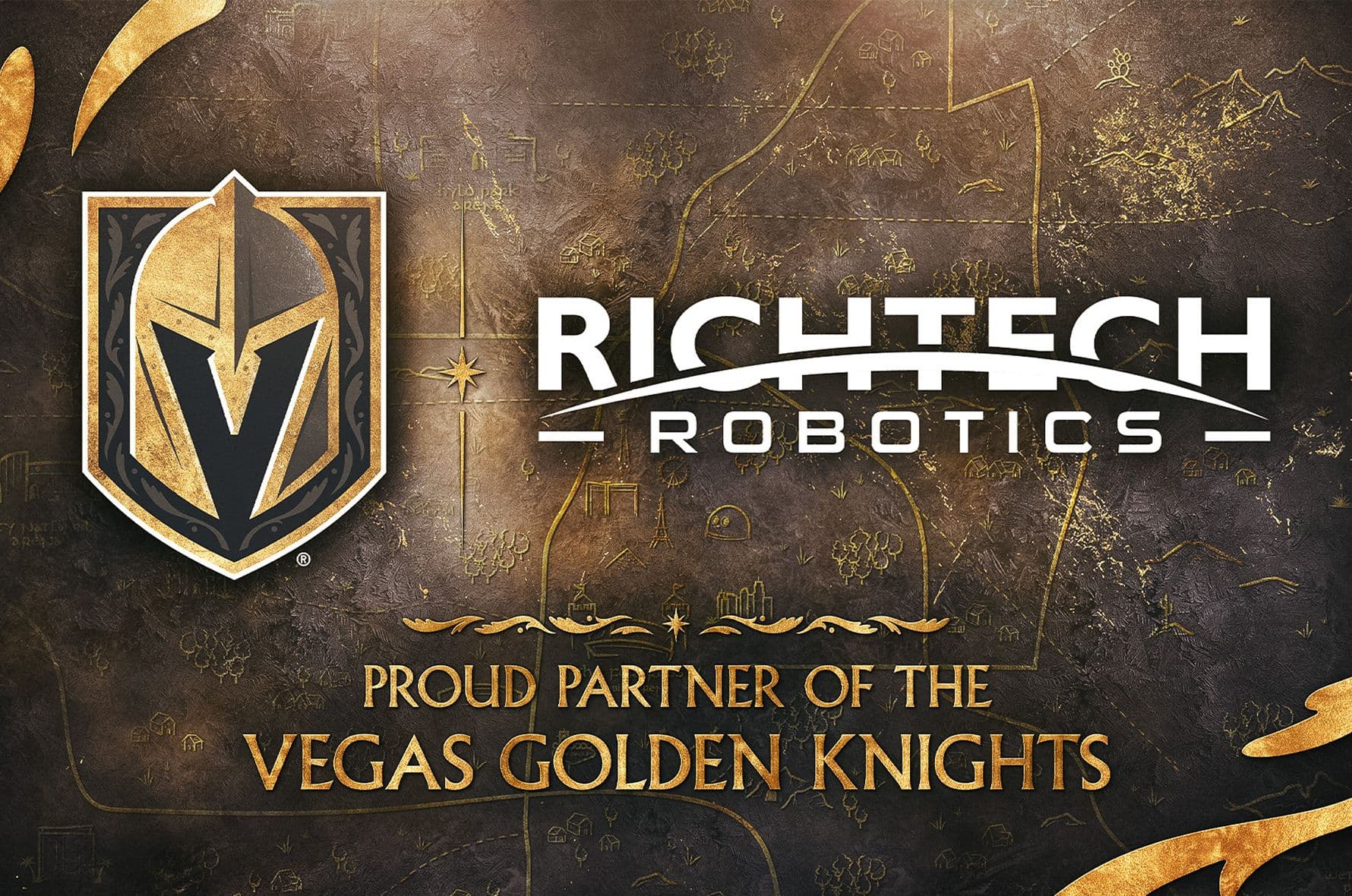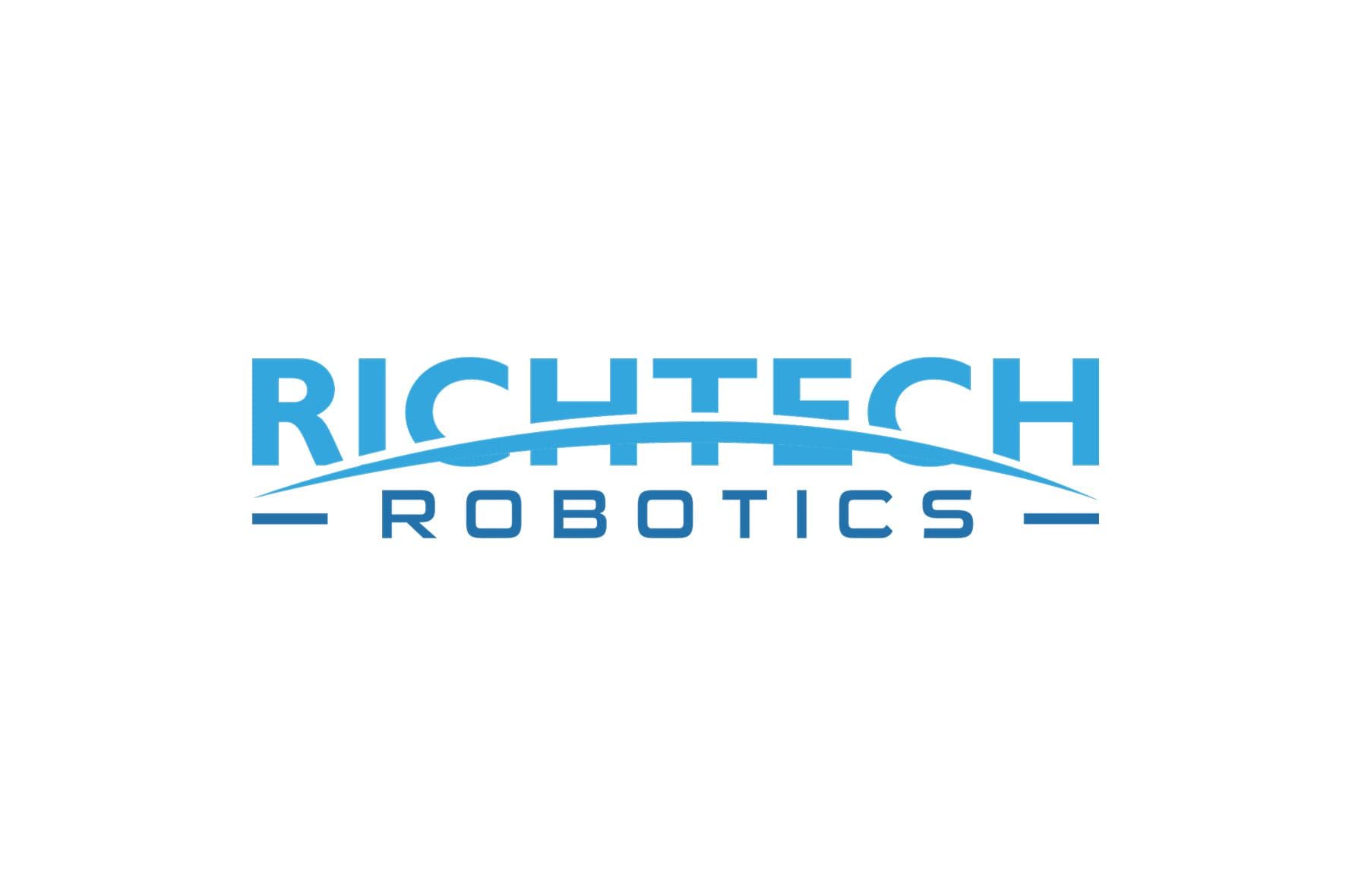The Emperor Has No Robots: Cutting Through AI Hype to Find Solutions That Actually Work

7-9 minute read
Ever notice how most "revolutionary" AI-powered robots only seem to work in carefully edited videos? Meanwhile, at Richtech Robotics, we're quietly deploying intelligent machines that actually deliver ROI in the real world. Welcome to the stark difference between merely talking about AI robotics and actually implementing functional, physical AI solutions that transform businesses today.
The CGI Deception: How Robotics Companies Fabricate AI Capabilities They Can't Deliver
Let's be brutally honest for a second. The robotics industry has a serious credibility problem when it comes to artificial intelligence integration.
While competitors' slick marketing teams create jaw-dropping CGI demonstrations of robots performing impossible feats, real business owners wonder why these supposedly advanced AI robotic systems can barely navigate around a chair without crashing. It's the tech world's equivalent of Instagram vs Reality, and the capability gap is staggering.
We've embraced a fundamentally different approach to AI-powered robotics: we only showcase what actually works in real-world environments. No CGI. No simulations masquerading as reality. No camera tricks. Just functional autonomous robots solving real problems for real businesses through practical applications of machine learning and computer vision.
Crazy concept in today's AI robotics landscape, right?
What "Physical AI" Really Means in Robotics (Without the Buzzword Salad)
NVIDIA's Jensen Huang recently introduced a concept that perfectly captures our robotics philosophy: "Physical AI." Not the virtual AI assistants that live in your phone, but intelligent robotic systems that operate in and respond to the physical world [1].
While other robotics companies rush to claim this terminology for their imaginary autonomous machines, we've been silently building functional Physical AI solutions for years. For us, the definition of AI in robotics is elegantly simple:
"Machines that serve so Humans can soar."
That's our entire AI robotics philosophy distilled into seven simple words. Not robots designed to replace people, but intelligent physical systems that handle mundane tasks through advanced machine learning so humans can focus on what we do best—creating, connecting, and innovating.
The Uncomfortable Truth About AI Robotics Nobody Wants to Admit
Here's what's happening behind those glossy automated robot demos you've seen from other robotics companies:
- CGI masquerading as reality. Many of those "revolutionary AI breakthroughs" in robotics haven't actually left the video editing room. They're digital effects teams' creations, not engineering achievements. When you see our autonomous robots in action, you're watching actual machines implementing real machine learning algorithms.
- Lab conditions vs. real life. Even when competitors show real AI robotics footage, it's typically in perfectly controlled environments that bear no resemblance to your business operations. Our AI-powered robots thrive in chaotic, unpredictable settings—you know, like the actual environments where work happens.
- Human puppeteers. Those viral videos of humanoid robots performing fluid, complex movements? They're often directly mirroring human operators standing right in the frame! While basic AMRs have legitimately navigated warehouses for years, these showpiece robots can't function without moment-by-moment human guidance. Our AI robotics systems actually make their own decisions in real time without human choreography, using advanced computer vision and sensor fusion for true autonomy.
- The ROI mirage. Most advanced AI robotics companies conveniently avoid discussing when (or if) their technology will ever deliver financial returns. Many of our customers implementing our robotic solutions see 100% ROI in as little as 3-6 months—some within 30 days of deployment [2]!
Physical AI: The Ultimate Gauntlet — 5 Ruthless Tests That Separate Innovation from Illusion
While others talk about theoretical capabilities coming "soon," our Physical AI technology is already transforming businesses across America. This isn't sci-fi—it's a competitive advantage happening now through practical automation.
The market confirms our approach. The global AI robotics market is projected to reach a staggering $283 billion by 2032, growing at nearly 15% CAGR annually [3]. That's not speculation—it's recognition that autonomous robots deliver measurable value today.
After deploying hundreds of AI-powered systems in real-world environments, we've developed a ruthless authentication framework that exposes pretenders instantly. Here are the five non-negotiable tests any legitimate Physical AI system must pass:
- Adaptive perception – Can it reliably understand constantly changing environments using computer vision? Or does the robot freeze when someone moves a chair?
- Autonomous decision-making – Does it navigate complex situations without human hand-holding using advanced machine learning algorithms?
- Natural human interface – Can your non-technical staff communicate with the robot easily through intuitive interfaces? Or do you need to hire specialized programmers?
- Environmental adaptability – Will your automated system function in YOUR environment through real-time sensor processing, not just a sterile lab?
- Collaborative design – Was the robot built to complement human capabilities through human-centered AI or awkwardly replace them?
Ask your AI robotics vendor to demonstrate these capabilities live in your actual workspace, not in a carefully edited video. Their reaction will tell you everything about their real level of artificial intelligence implementation.
Made in America: The Secret Weapon in Our Physical AI Robotics
Location matters more than ever in the manufacturing of AI robotics. While competitors scrambled to reconfigure their supply chains after recent tariff changes, our strategic decision to conduct parts of our AI powered robots manufacturing and development process in America transformed from a "risky bet" to an "absolute win" [4].
This isn't just flag-waving—it's fundamental to our definition of Physical AI robotics. Development proximity enables:
- Real-time iteration based on customer feedback for continuous AI improvement
- Response times for autonomous system support measured in hours, not weeks
- Protection from increasingly volatile global supply chains affecting robot production
When a minor calibration issue arose with one of our ADAM robots at a Walmart location in Illinois, our robotics technicians addressed it within hours [5]. Compare that to dealing with overseas support teams who can't even respond during your business hours—costing you days and weeks in downtime.
That's not just a business advantage; it's the difference between a robot that works reliably and one that doesn't deliver on its autonomous capabilities.
Liberation Through Automation: Physical AI Robotics That Sets You Free
"Automate. Liberate. Create."
This isn't just a catchy slogan—it's the profound human impact driving everything we build into our AI robotics systems. While competitors design increasingly unsettling humanoid robots with questionable AI implementations, we focus on one thing: liberating human potential through practical robotics automation.
Take Clouffee & Tea in Las Vegas. We've observed significant labor cost reductions for this innovative concept while maintaining service quality [6]. That's not just cost-cutting—it's business-saving through intelligent automation. And it's happening precisely when California's fast-food minimum wage has hit $20 per hour, with restaurant wages continuing to rise [7].
This economic reality is why AI-powered robotics solutions have become not just attractive but essential for business survival. Industry reports show that only about one-third of restaurants hit their labor cost targets, with 44% spending more than planned [8] – a gap that intelligent automation can effectively address.
Want Proof? We'll Skip the CGI and Show You Real AI Robotics Results
We’ve heard the skepticism. "Everyone makes big claims about AI in robotics. What makes your autonomous systems different?"
Fair question. Instead of CGI product videos of theoretical AI capabilities, we offer something radical: documented results from actual robotics deployments:
- ADAM: Transforming Food Service Economics Automated bartending is revolutionizing the food and beverage industry. According to the National Restaurant Association, labor typically accounts for 30-35% of restaurant costs, with bartenders averaging 30-40 drinks per hour during peak periods [9]. Our own ADAM deployment data shows consistent performance regardless of time of day or customer volume. Industry analysis from Food & Wine Magazine reports that automated bartending systems can reduce beverage service labor costs by 30-40% while maintaining quality and consistency [10]. Similar systems have achieved ROI periods ranging from 6-12 months, according to Hospitality Technology Magazine's 2024 industry assessment [11].
- TITAN: Projected $1.1M Annual Impact from Recent Highline Dealership Pilot A luxury car dealership recently completed a one-month pilot of our TITAN robot with eye-opening results. During this brief test, TITAN delivered parts with an average time of just 58.6 seconds—dramatically faster than human runners. The consistency was remarkable: 99.5% of deliveries completed in under 60 seconds, with 24/7 availability and zero downtime. Each technician reclaimed 38.6 minutes daily, translating to 13.5 additional billable hours monthly per tech. Conservative projections based on the pilot data indicate a potential annual impact of $1.1 million for this single location [12].
- MEDBOT: Tripling Healthcare Efficiency When It Matters Most At a major acute care facility in South Carolina (520 beds), six MEDBOTs replaced an outdated delivery system with transformational results. These autonomous delivery specialists increased efficiency by 300% compared to previous solutions, saving 600 staff hours in just 30 days—translating to $12,000 in immediate payroll savings. More importantly, by handling pharmacy deliveries, lab specimens, and medication distribution, MEDBOT freed critical healthcare workers to focus on what truly matters: patient care [13].
This isn't hypothetical value from theoretical AI—it's measurable business impact from practical robotics happening today.
The Future Belongs to Physical AI Robotics That Actually Works
While others race to create robots with AI capabilities that look impressive in 15-second social media clips, we're focused on creating Physical AI systems that deliver value 24/7/365 in real operating environments through practical implementations of machine learning.
The question isn't whether AI robotics will transform business—it's which companies will capture the value. Will it be those creating impressive AI demos, or those delivering practical autonomous solutions?
Industry experts predict robotics with genuine AI capabilities will become one of the world's dominant industries, with Physical AI entering mainstream business use far sooner than most expect [14]. The winners won't be the most photogenic robots with theoretical AI, but the autonomous systems that actually deliver what they promise.
The AI robotics revolution isn't coming—it's already here. And we're defining it with machines that work through genuine artificial intelligence, not renderings that wow.
Are you ready to move beyond the CGI demos and experience the physical reality of AI robotics that actually delivers measurable business results? Let's talk about implementing genuine autonomous solutions in your operation today.
This thought leadership article on AI in robotics was written by the team at Richtech Robotics, pioneers in AI-driven robotics technology that delivers practical value in real-world applications. To learn more about our robots that actually work through advanced artificial intelligence, visit richtechrobotics.com.
References
[1] NVIDIA. "CES 2025: AI Advancing at 'Incredible Pace,' NVIDIA CEO Says." NVIDIA Blog, January 2025.
[2] Richtech Robotics. "AI Robotics Implementation Analysis." Internal Report, March 2025.
[3] Precedence Research. "Robotics Market Size to Hit Around USD 283.19 Billion by 2032." GlobalNewswire, March 2023.
[4] SupplyChainBrain. "Trump Kicks Off Global Trade War with Sweeping Tariffs." SupplyChainBrain, April 2, 2025.
[5] Richtech Robotics. "ADAM Robot - Automated Beverage Service Solution." Richtech Robotics, 2025.
[6] Richtech Robotics. "Clouffee & Tea Las Vegas Launch." Press Release, February 2025.
[7] U.S. Bureau of Labor Statistics. "Consumer Price Index, Los Angeles area — February 2025." BLS, March 2025.
[8] 7shifts. "Restaurant Workforce Report 2025." 7shifts, January 2025.
[9] National Restaurant Association. "2024 State of the Restaurant Industry Report." NRA Research & Insights, January 2025.
[10] Food & Wine Magazine. "Automation in Hospitality: The Economics of Robot Bartenders." Industry Analysis, December 2024.
[11] Hospitality Technology Magazine. "Restaurant Automation ROI Study." Annual Technology Report, February 2025.
[12] Richtech Robotics. "TITAN Robot: Luxury Dealership Pilot Analysis." Implementation Report, March 2025.
[13] Richtech Robotics. "Medbot Case Study: Large Scale Regional Healthcare System." Implementation Report, April 2025.
[14] Forbes. "What Is Physical AI, And Why It Could Change The World." Forbes, August 2024.


